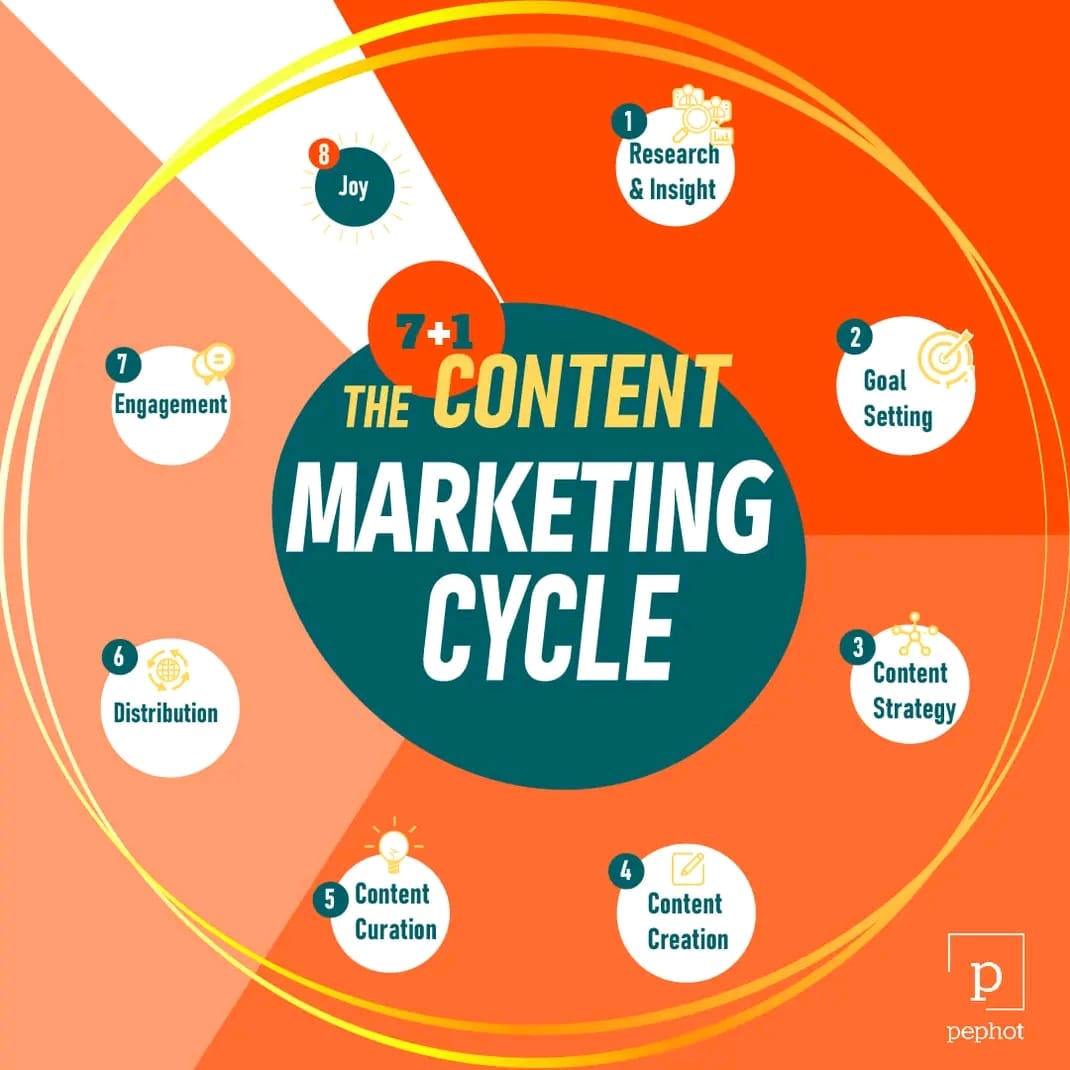A guide offering five powerful strategies for content creators to market their work effectively and increase reach, covering SEO, social media, email marketing, guest blogging, and influencer collaborations, with practical tips to maximize content impact.
As a content creator, you pour your heart and soul into crafting valuable, engaging content for your audience. However, even the most well-written and informative content can go unnoticed if you don't have an effective content marketing strategy in place. In today's crowded online landscape, it's essential to promote your content strategically to ensure it reaches the right people at the right time.
In this comprehensive guide, we'll explore five proven strategies to help you market your content effectively, boost your visibility, and drive more traffic to your website or blog. Whether you're a blogger, business owner, or content marketer, these tactics will equip you with the tools you need to amplify your content's reach and maximize its impact.
1. Mastering Search Engine Optimization (SEO)
Search engine optimization (SEO) is the foundation of any successful content marketing strategy. By optimizing your content for search engines, you increase the chances of your target audience discovering your content organically through search queries.
Keyword Research: The first step in SEO is to conduct thorough keyword research. Identify the keywords and phrases your target audience is searching for, and incorporate them naturally into your content. Tools like Google Keyword Planner, Ahrefs, or SEMrush can help you uncover high-volume, low-competition keywords that align with your content topics.
On-Page Optimization: Once you have your target keywords, optimize your content by including them in strategic locations such as the title, headings, meta descriptions, and throughout the body text. However, be cautious of keyword stuffing, as search engines penalize content that appears spammy or over-optimized.
Content Quality: Search engines prioritize high-quality, valuable content that provides a great user experience. Ensure your content is well-researched, informative, and engaging. Use relevant images, videos, and other multimedia elements to enhance the user experience and keep readers engaged.
Technical SEO: In addition to on-page optimization, technical SEO factors like site structure, URL structure, page load speed, mobile-friendliness, and XML sitemaps can significantly impact your search engine rankings. Regularly audit and optimize these technical aspects to ensure your content is easily discoverable and accessible to search engines.
2. Leveraging Social Media Marketing
Social media platforms offer a powerful avenue for promoting your content and engaging with your target audience. By sharing your content on relevant social channels, you can increase visibility, drive traffic to your website or blog, and build a loyal following.
Identify Relevant Platforms: Start by identifying the social media platforms where your target audience is most active. Popular choices include Facebook, Twitter, Instagram, LinkedIn, and Pinterest. Conduct audience research and analyze platform demographics to determine the best fit for your content and brand.
Consistent Presence: Once you've identified the right platforms, establish a consistent brand presence across all channels. Use a cohesive visual identity, tone of voice, and posting schedule to build recognition and loyalty among your followers.
Share Valuable Content: Share your blog posts, articles, videos, or other content consistently on your social media channels. Additionally, share relevant and valuable content from authoritative sources within your industry to position yourself as a thought leader.
Engage Your Audience: Social media is a two-way conversation. Engage with your audience by asking questions, responding to comments, and encouraging discussions around your content. This interaction not only builds rapport but also helps you better understand your audience's needs and interests.
Leverage Influencer Marketing: Identify influencers or thought leaders within your niche and collaborate with them to promote your content. This can include guest posting opportunities, social media takeovers, or co-creating content. Influencer marketing can provide a significant boost to your content's visibility and credibility.
3. Unlocking the Power of Email Marketing
Email marketing is a tried-and-true method for nurturing relationships with your existing audience and promoting your content directly to their inboxes. By building an email list and sending regular newsletters or updates, you can keep your subscribers engaged and encourage them to visit your website or blog.
Offer Incentives: Encourage visitors to subscribe to your email list by offering incentives such as free ebooks, exclusive content, or special discounts on your products or services. This added value increases the likelihood of people opting into your list.
Segment Your Audience: Segmenting your email list based on subscriber interests, demographics, or behavior allows you to deliver more targeted and relevant content. This personalized approach can significantly increase engagement and conversions.
Optimize Email Content: Craft compelling email subject lines that grab attention and encourage recipients to open your emails. Personalize the content by addressing subscribers by name, and include clear calls-to-action (CTAs) that direct them to your website or specific pieces of content.
Analyze and Optimize: Track email marketing metrics such as open rates, click-through rates, and conversion rates. Use this data to optimize your email campaigns continuously and improve their effectiveness over time. Test different subject lines, content formats, and CTAs to see what resonates best with your audience.
4. Guest Blogging: Tapping into New Audiences
Guest blogging is a strategic content marketing technique that involves writing and publishing articles on other high-authority blogs or websites within your niche. This approach can help you tap into new audiences, establish your expertise, and drive referral traffic back to your website or blog.
Identify Relevant Blogs: Research and identify popular blogs or websites within your industry that accept guest contributions. Look for blogs with a significant audience overlap with your target market and a strong online presence.
Pitch High-Quality Content: Develop a compelling pitch that outlines the value your guest post will provide to the host blog's audience. Offer to write high-quality, well-researched, and engaging content that aligns with the host blog's editorial guidelines and adds value to their readers.
Include Backlinks: When guest blogging, include relevant backlinks to your website or specific pieces of content within the article. These backlinks can help increase referral traffic and improve your website's search engine rankings over time.
Promote Your Guest Posts: Share your guest posts on your social media channels and with your email list to maximize visibility and drive traffic back to both the host blog and your own site. Cross-promotion can benefit both parties and expand your reach to new audiences.
5. Amplifying Your Content with Influencer Outreach
Collaborating with influencers or thought leaders within your industry can be an effective way to promote your content and reach new audiences. Influencers have established followings and can lend credibility and social proof to your content, making it more appealing and trustworthy to their followers.
Identify Relevant Influencers: Research and identify influencers who have a strong presence and engaged following within your niche. Look for influencers whose values, interests, and audience align with your brand and content.
Establish Relationships: Engage with influencers by commenting on their content, sharing their posts, and participating in their communities. Build genuine relationships before attempting any collaborations to increase the chances of a positive response.
Collaborate on Content: Once you've established a rapport, approach influencers with collaboration opportunities that can benefit both parties. This can include guest posting on each other's blogs, co-creating content like webinars or podcasts, or cross-promoting content on social media.
Leverage Influencer Marketing Platforms: Consider using influencer marketing platforms like BuzzSumo, Upfluence, or GRIN to streamline the process of identifying and connecting with relevant influencers. These platforms provide valuable insights, analytics, and tools to facilitate influencer collaborations.
By implementing these five powerful content marketing strategies effectively, you can increase the visibility and reach of your content, drive more qualified traffic to your website or blog, and ultimately achieve your goals, whether that's building a loyal audience, generating leads, or establishing thought leadership within your industry.
Remember, content marketing is an ongoing process that requires consistent effort, experimentation, and adaptation. Regularly analyze your performance metrics, identify areas for improvement, and refine your approach based on what resonates with your target audience. With a strategic and data-driven mindset, you can unlock the full potential of your content and achieve remarkable success in today's competitive online landscape.


























